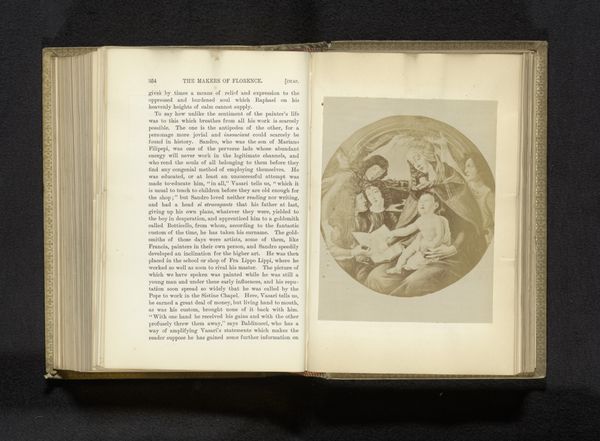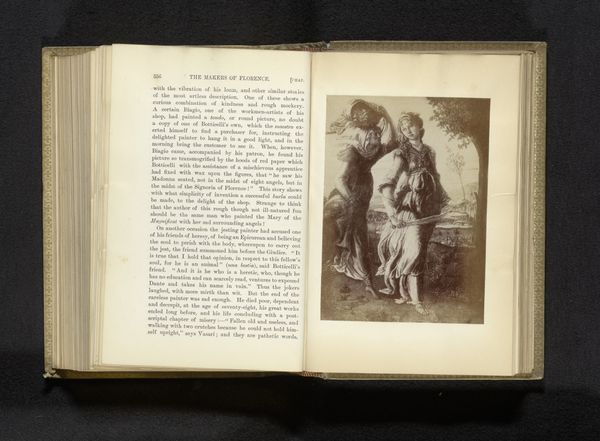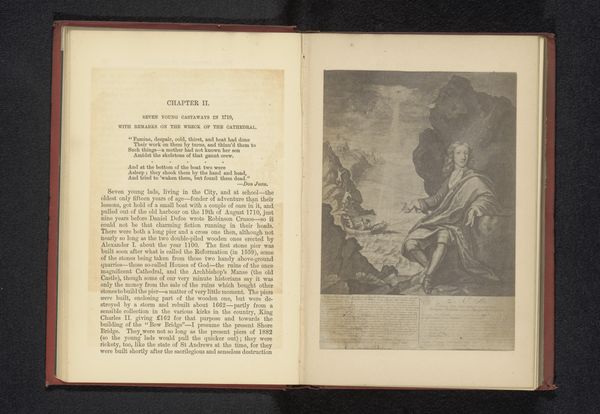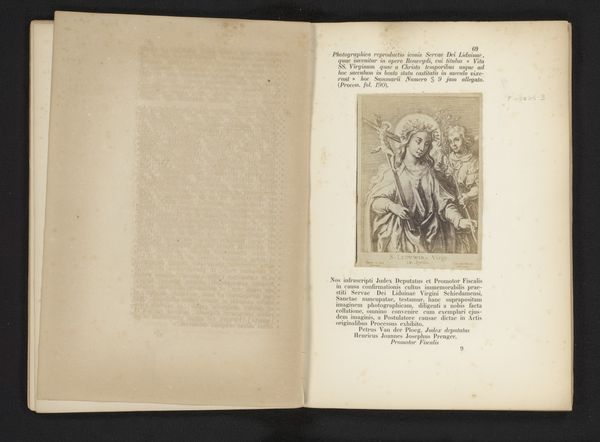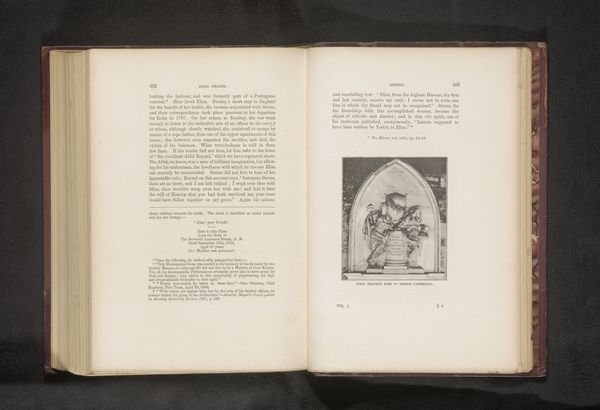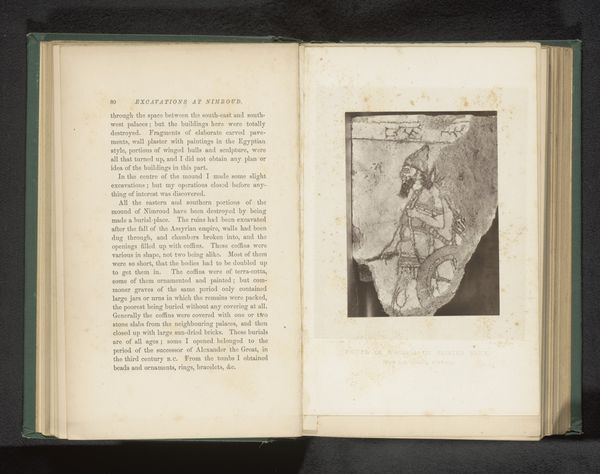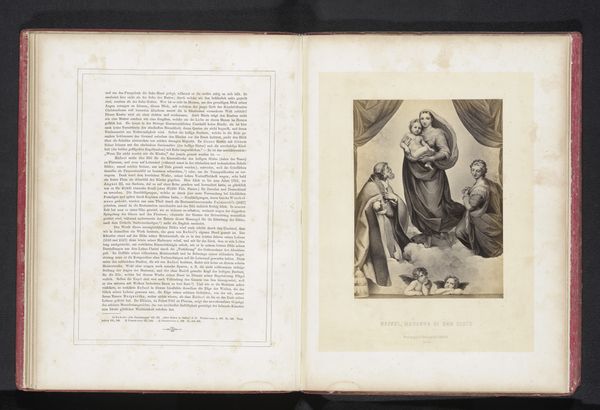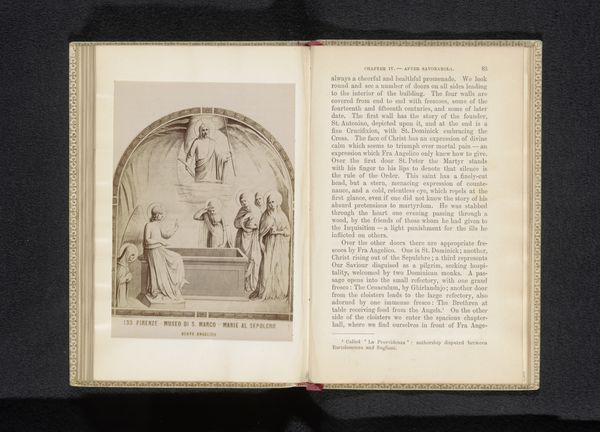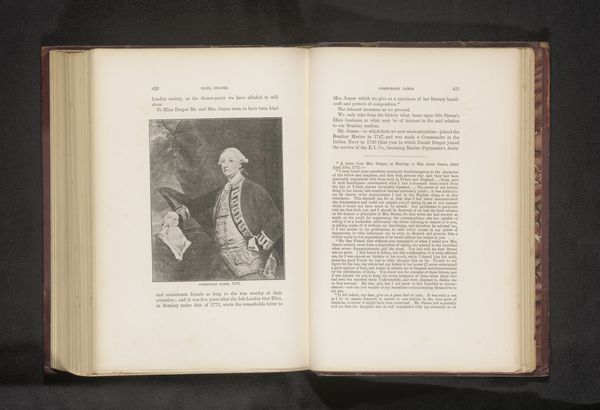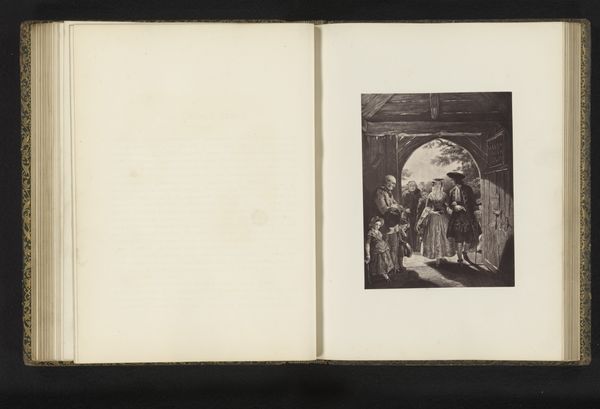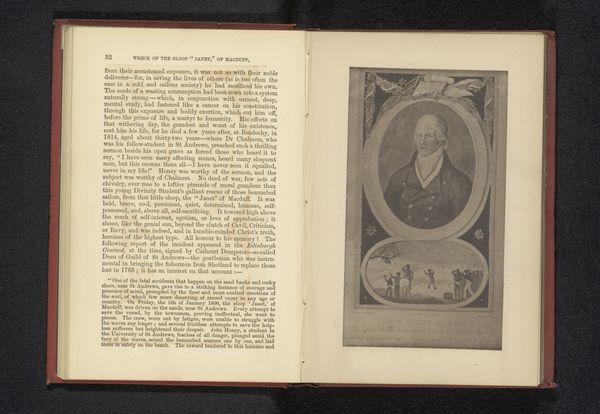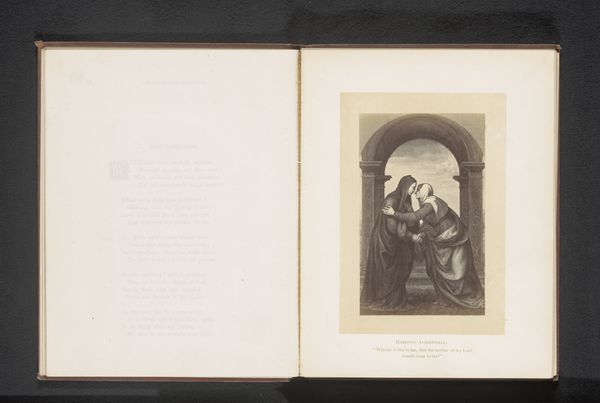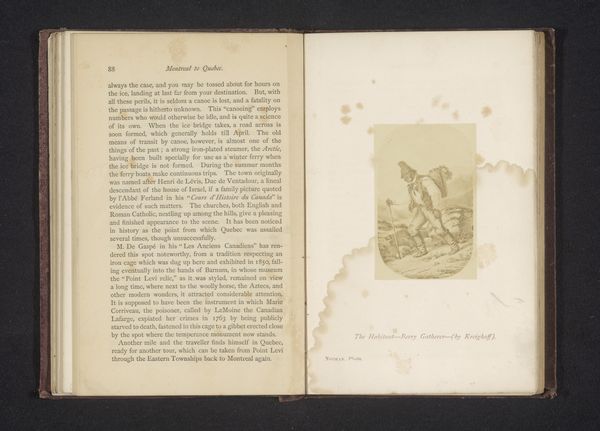
print, photography
#
allegory
# print
#
book
#
photography
#
history-painting
#
italian-renaissance
Dimensions: height 129 mm, width 85 mm
Copyright: Rijks Museum: Open Domain
Curator: Here we have a photographic reproduction of a painting depicting "The Visitation," estimated to be from before 1888. It captures a moment of profound connection. What's your initial read? Editor: Stark simplicity, really. Stripped down to its core essence, almost a monochromatic dream. The heavy use of shadow creates an aura of solemnity and perhaps a bit of old-world weariness in its subject. But let's consider this object more specifically, the printed page, its materiality and context—reproduction as a cultural phenomenon in the late 19th century. Curator: Exactly. As a print, this would have circulated images and ideas much wider. Think of it, not just as religious art but as an early form of mass media bringing the Italian Renaissance to parlors far removed from Florence. Editor: Making it far more accessible and, arguably, altering the reception of its themes. We lose the artist's touch; instead, it is just more stuff, more commodities printed on paper produced in massive mills by factory workers. Curator: Fair point! But think about how this new availability reframed the conversation, influencing design, fashion, social movements, even interpretations of faith…It sparked curiosity, fostered discourse in people’s lives. Editor: Hmmm... How can we measure the exchange between the hand-rendered painting and photomechanical print to see shifts in devotional practices? I bet an exploration into pigments, paper-pulp sources, printing practices, and circulation records may point to more complex questions of spiritual capitalism than meet the pious eyes. Curator: Alright, alright... you've got me thinking. The shadows *are* much heavier and less forgiving. There is definitely an abstraction here of human expression reduced through mechanical processes. Even within reproduction, there's a degradation and remixing happening with context... the sacred bleeds out in this version, into something else, strange. Editor: Perhaps something closer to industrial modernity and our ever-churning visual-historical stream. What were once "masterpieces" become decontextualized subjects. The artist's original is reduced to an informational or didactic object with the development of reproducibility that is fascinating for further examination. Curator: Absolutely. An exciting jumping-off point into uncharted perspectives!
Comments
No comments
Be the first to comment and join the conversation on the ultimate creative platform.
